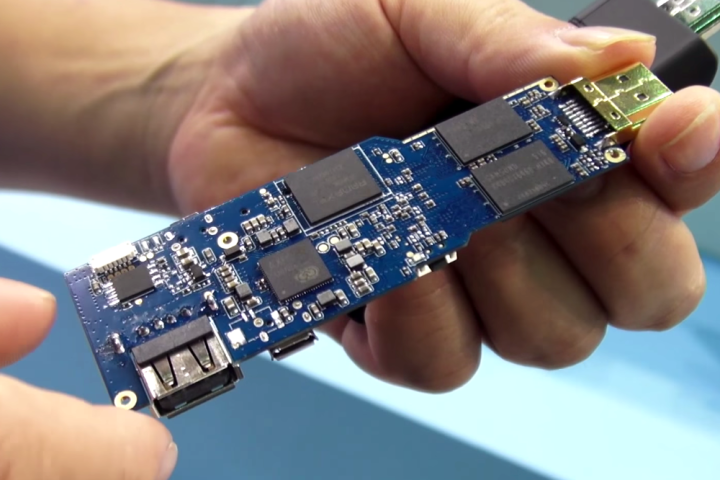
Now, Shenzhen-based electronics firm Pipo has thrown its name into the hat by announcing specs for its X1 stick PC, according to a report from Liliputing. First unveiled at Computex last month, the device looks broadly similar to the Intel Compute Stick. That’s not real surprise, as Intel built its Compute Stick as a reference other manufacturers could use to draw inspiration from.
The X1 will use an Intel Atom Z3735F processor, pack 2GB of RAM and 32GB of storage. It also boasts a Micro SD card reader and a full sized USB port. It does have a small advantage over the Compute Stick thanks to an additional micro USB port, which will give users more options as to how they connect peripherals like a mouse and keyboard to the device.
Pipo is looking to offer support for both Android and Windows OS options with the X1, with the former likely being built on the foundation of the Android-based TV stick that the company is currently selling under the same name. A variant that can dual boot both OSes is also reportedly in the works, but at present there is no information as to whether that would be offered as a separate product, or a premium version of the standard X1.
A release date for the Pipo X1 has not been announced as of the time of writing.
Editors' Recommendations
- The ReSpec newsletter is here: your weekly breakdown of the tech behind PC gaming
- The ThinkPad X1 Carbon Gen 11 is both faster and longer-lasting
- Surprise — Redfall on PC is yet another problematic port
- What is DirectX, and why is it important for PC games?
- Another high-profile PC game calls for 32GB of RAM


